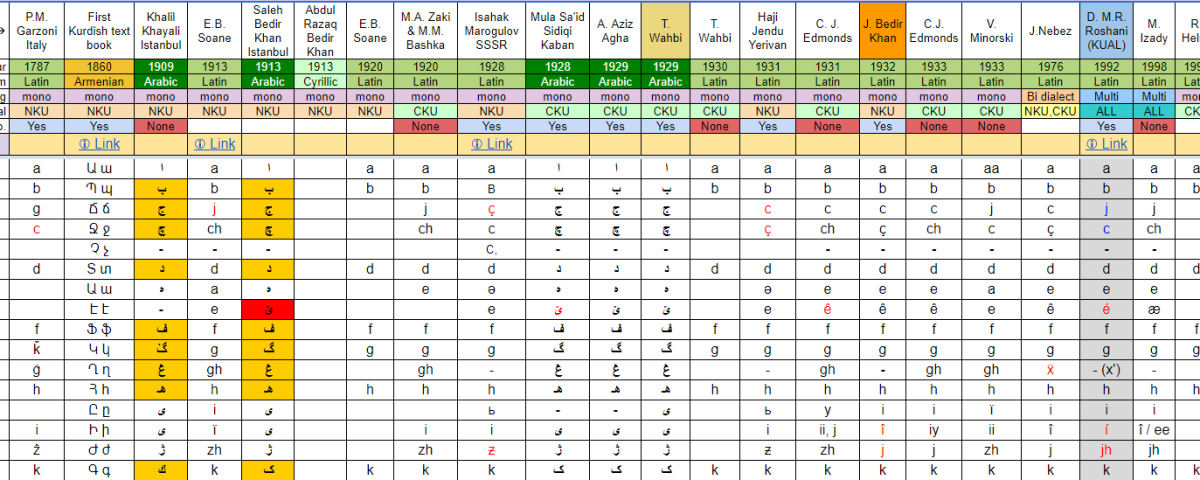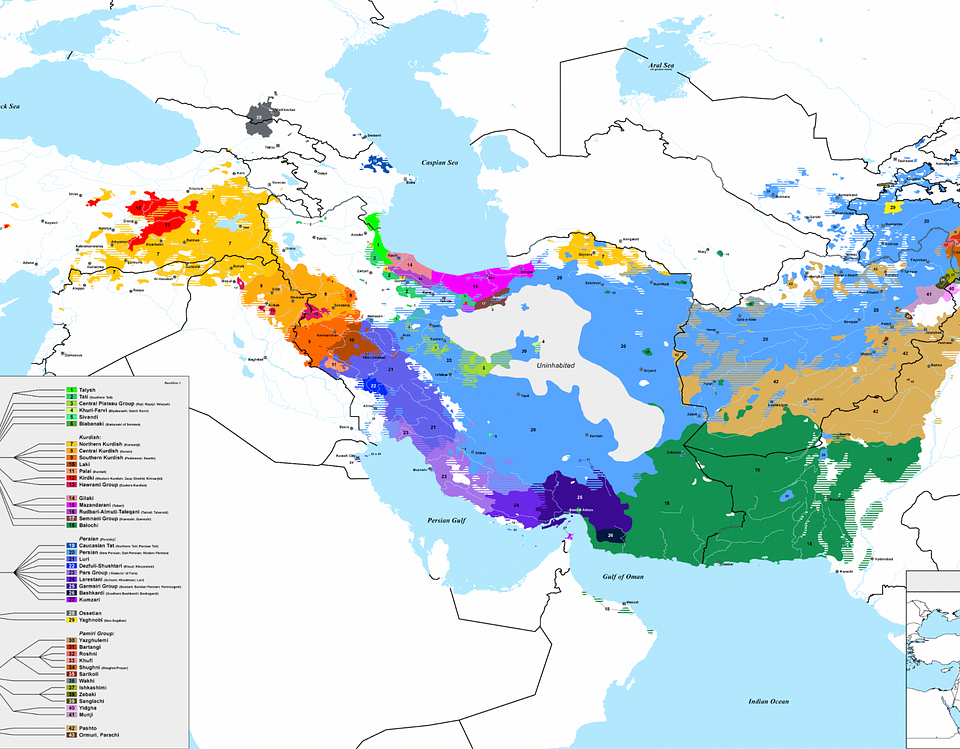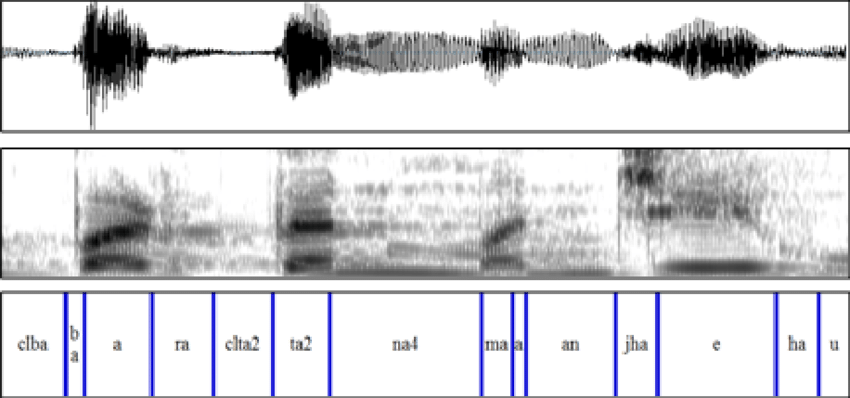A Kurdish Orthography TIMELINE
A Kurdish Orthography TIMELINE

Kurdish orthography encompasses the writing conventions used to represent the diverse spoken Kurdish dialects in written form, enabling readers to connect spelling, sound, and meaning effectively.
Like many other world languages, Kurdish orthography has undergone a significant degree of standardization across its dialects. This process began with the systematic emergence of newspapers, publications, and educational textbooks across the divided Kurdish regions. In the late 18th century, the introduction of movable type to Kurdistan transformed publishing into a powerful tool for advocating political and cultural rights. However, unlike most languages, Kurdish has multiple codification attempts based on dialects and non-standard spelling for nearly every phoneme (sound). Additionally, most letters can have multiple pronunciations, depending on their position within a word and the context of the spoken dialect.
This complexity is partly due to the influence of words borrowed from many other languages throughout Kurdish history, combined with unsuccessful attempts at comprehensive spelling reform. It is also the result of historical accidents—such as the early mass-produced Kurdish publications, which were often typeset by politically motivated, untrained multilingual printing compositors. These compositors sometimes applied spelling patterns more typical of other regional lingua franca languages.
Most modern Kurdish spelling conventions derive from the phonetic spelling of various North and Central Kurdish dialects. However, these conventions do not always reflect sound changes in other major dialects, such as Hewramí and Southern Kurdish. Consequently, many words are spelled based on their pronunciation in North and Central Kurdish dialects, contributing to differences in how Kurdish is written and spoken across regions.
Phonemic Orthography
Kurdish orthography generally follows a phonemic principle, where each letter represents a specific sound (phoneme). For example, in the word “Dar” (/ˈda:ɾ/), the letters ⟨d⟩, ⟨a⟩, and ⟨r⟩ correspond to the sounds /d/, /a:/, and /ɾ/, respectively. Sometimes, combinations of letters also represent a single phoneme. For instance, in the word “shax” (pronounced /ˈʃa/), the digraph ⟨sh⟩ represents the sound /ʃ/.
Kurdish Orthography: A Historical Timeline
The table below outlines the history of Kurdish codification efforts, dating back to the 17th century. To this day, there is no single, universally accepted alphabet for the Kurdish language as a whole. However, the Kurdish Unified Alphabet (KUAL), also known as Yekgirtú, is recommended by this platform (KAL) as a standardized option.


